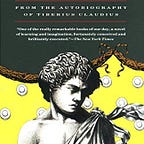Boudicca’s Wrath On The Romans 60 A.D.
During the first century A.D., Romans settled themselves in southeastern Britain thanks in large part to Roman conquest by such figures as Julius Ceasar roughly a century earlier. In 59 A.D., a British native and the king of the Iceni tribe who ruled over southeastern Britain suddenly died.
Roman authorities then took possession of his entire estate. The now-deceased king had intended to give it to the emperor of Rome in hopes of appeasing him to maintain peace for his people after his death. But the Roman authorities took advantage of the situation and took the land for themselves and even whipped the newly widowed wife, Boudicca, and raped her two daughters.
According to the Roman historian, Dio Cassius, Boudicca “was very tall, in appearance most terrifying, in the glance of her eye most fierce.” Boudicca and other tribes of Britain came together to fight their oppressive rulers.
They “rampaged through the southern part of the island, spreading death and destruction to Romans, Roman sympathizers, and Roman structures and symbols.” Boudicca “attacked a Roman Colony at Colchester, slaughtering its residents and putting it to the torch. Informed that the Roman Ninth Legion was rushing to the colony’s aid she laid an ambush and annihilated 1,500 elite Roman infantrymen.” She then headed for London.
The Roman governor of London heard of this and fled the city along with his men. Once she reached the city, all the inhabitants were butchered and she torched the city to the ground.
Dio reported that Boudicca and her men “hung up naked the noblest and most distinguished women and then cut off their breasts and sewed them to their mouths, in order to make the victims appear to be eating them; afterwards they impaled the women on sharp skewers run lengthwise through the entire body. All this they did to the accompaniment of sacrifices, banquets, and wanton behavior.”
Boudicca and her fellow tribal people couldn’t quench their thirst for Roman blood. Tacitus wrote that “the British could not wait to cut throats, hang, burn, and crucify.” He also stated that the Britons “killed seventy-thousand Roman Soldiers and civilians.”
The Romans, however, were too militarily advanced and over many skirmishes eventually took control of the uprisings by slaughtering “the old as well as the young men, women, children, and animals, throwing human and animal bodies on a common pile of corpses.”
And the warrior Queen, Boudicca, avoided capture only to poison herself to death. Thus ended the biggest uprising the Britons would ever deliver to the Romans. Boudicca’s main objective — of repelling the Romans from the island — had failed.
The island would continue to be in Rome’s grasp for the next three hundred years. Over that time the “barbarians” would adopt aspects of Roman culture. They even began wearing togas, speaking Latin, and acquired baths. However, most Britons maintained their native Celtic language. Whether the conquering Romans realized it or not, they were providing the fruits of civilization to a people that would one day rule an empire of their own.
And it’s ironic that the same warrior Queen who hated an oppressive foreign empire would one day become the inspiration for — an empire “on which the sun never sets” — the British Empire.
Sources:
Pax Romana: War, Peace, and Conquest in the Roman World By Adrian Goldsworthy
Conquests and Cultures: An International History By Thomas Sowell
The Greatest War Stories Never Told: 100 Tales from Military History to Astonish, bewilder, & Stupefy By Rick Beyer
